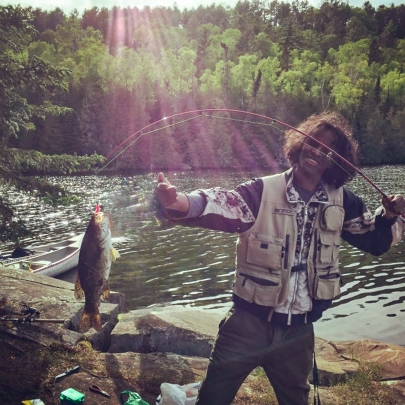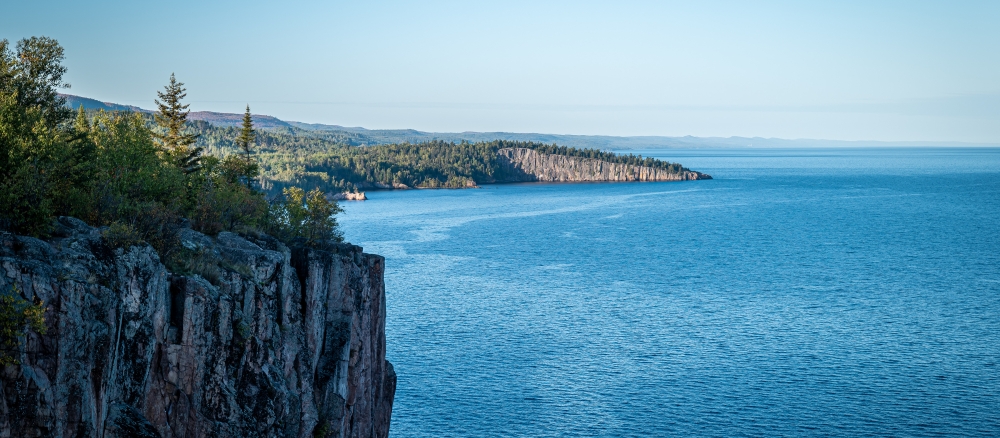
Abdirahman Hassan’s story begins in Mombasa, Kenya, a coastal city where the presence of the Indian Ocean was a childhood highlight. “I grew up waking up to the ocean, you know, its smells, its scent, and its color, and how it changes over time too. That ocean meant a lot to us.”
At the age of 12, Hassan moved to Minnesota. Initially, he was hesitant about moving away from the ocean. In Mombasa “you're surrounded by ocean and then all of a sudden, you're in a state that's landlocked,” he remembers.
Hassan grew more connected to Minnesota’s water as he took trips to the Boundary Waters and the North Shore. He picked up fishing as a hobby. His connection to water continued to grow through his work as a nurse. This gave him a deeper understanding of the biological and psychological importance of water to humans.
For Hassan, water has helped Minnesota become home. “I've learned to live in Minnesota, and I've seen its beauty, especially Lake Superior. It’s as big as the Indian Ocean from your perspective when you're on the coastline, because you can't see over the horizon.”
“When I went to the University of Minnesota, they had one statistic to like, entice people where they were like, ‘Minnesota has more coastline than California.’ And I always thought that was kind of a strange way of defining coastline. But then once I expanded my view, I was like, okay, well, this is how I can cope with being in Minnesota,” Hassan said with a laugh.
Learn more in the We Are Water MN exhibit
Hassan shared his story as a part of We Are Water MN, a traveling exhibit and community engagement program that explores Minnesotans’ relationships with water. The Somali Museum of Minnesota is hosting the exhibit this summer at Augsburg University.
The Somali Museum’s mission is to use their collection of traditional Somali arts as a tool for education, making it possible for young Somalis who have grown up in the United States to connect with their culture, as well as Minnesotans of other ethnic heritage to encounter Somali art and traditional culture for the first time. The Museum's programs explore the changing role of traditional arts and culture as the Somali people move across borders and time.
At the exhibit you will find:
- stories from Somali Minnesotans about the role water plays in their lives
- water-related artifacts from the Somali Museum’s collection
- interactive exhibits about water in Minnesota and the challenges around keeping water healthy
- events to celebrate Somali water culture in the past and present
Visit the exhibit June 22 through August 14 at Augsburg University, Oren Gateway Center Lobby, 610 22nd Ave. S., Minneapolis. Exhibit hours are Tuesday through Friday, noon to 7 p.m. and Saturday 10 a.m. to 1 p.m. Admission is free.
Events and activities
The Somali Museum of Minnesota has several events planned in conjunction with the exhibit, including:
- Opening reception, June 23, 5-7 p.m.
- Changing the Narrative: this event aims to deepen understanding of the challenges faced by Somalis in relation to climate change impacts on water resources, August 12, 5-7 p.m. at Augsburg University. Registration required.
About We Are Water MN
We are Water MN is led by the Minnesota Humanities Center in partnership with the Minnesota Pollution Control Agency; the Minnesota Historical Society; the Board of Water and Soil Resources; the Minnesota Departments of Agriculture, Health, and Natural Resources; and University of Minnesota Extension.
The program is funded, in part, with money from the Clean Water, Land & Legacy Fund — which was created by Minnesota voters on Nov. 4, 2008 — and by the National Endowment for the Humanities.
